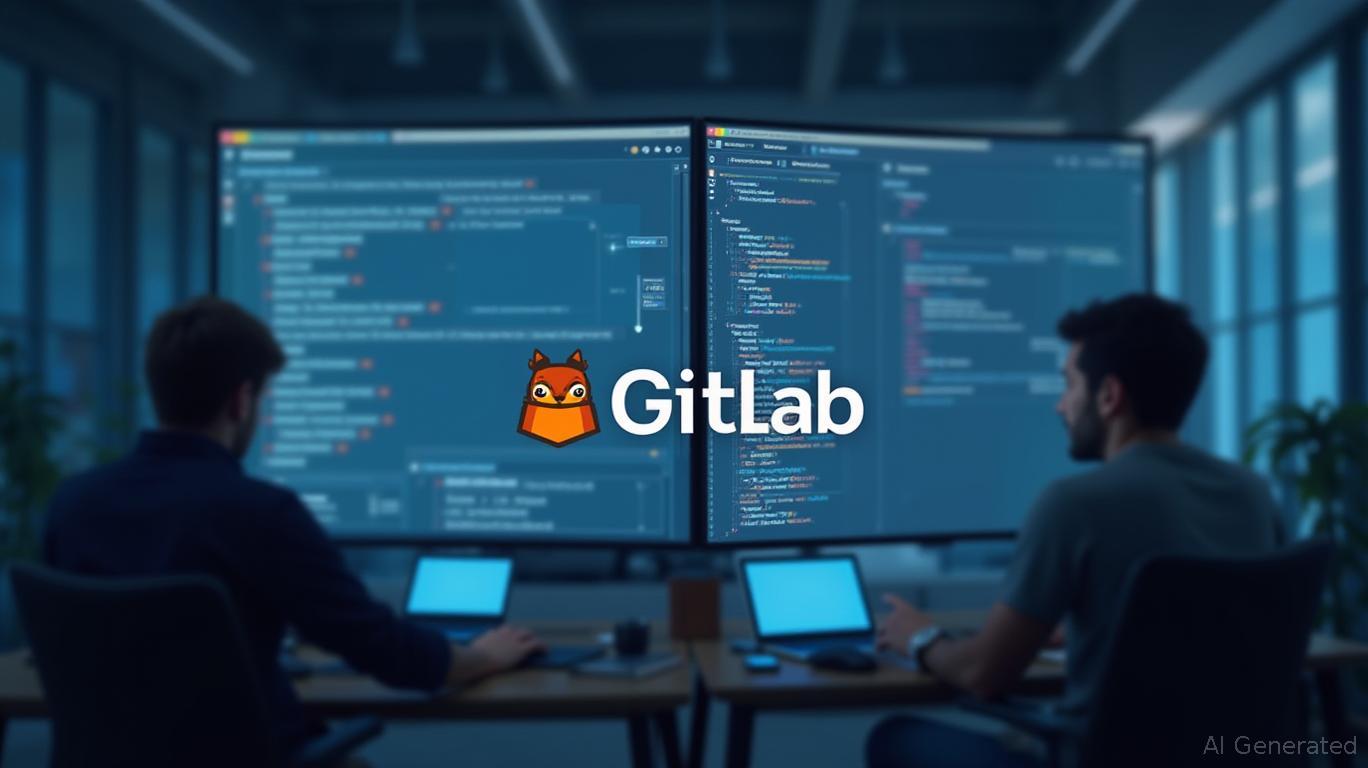GitLab's Valuation Crossroads: Can Q1 Earnings Spark a Turnaround?
GitLab (GTLB) has long been a darling of the DevOps software sector, but its valuation remains a polarizing topic. With a market cap of $8.05 billion as of June 2025, the company trades at a price-to-sales (P/S) ratio of 10.6x trailing twelve months (TTM) revenue of $759 million. While this multiple is modest compared to peers like Snowflake (SNOW) at 14.2x or Workday (WDAY) at 12.8x, GitLab's negative P/E ratio (-51.72) underscores its struggle to achieve profitability. As the company prepares to report its Q1 fiscal 2026 results on June 10, 2025, investors will scrutinize whether this quarter marks an inflection point for margin discipline or further losses. Here's why the stock could be primed for a reevaluation—and why risks still loom.

Valuation: A Growth Stock's Dilemma
GitLab's valuation hinges on its ability to grow revenue while narrowing losses. The company's TTM revenue growth of ~25% (per prior quarters) has been robust, but net losses have widened. A P/S ratio of 10.6x is far from excessive in a sector where high-growth SaaS companies often trade at 10–15x sales. However, the negative P/E ratio raises a critical question: Is the market pricing in a prolonged path to profitability, or is
undervalued given its growth trajectory?The stock's recent price of ~$60 (as of June 2025) sits near the midpoint of its 52-week range ($40.72–$76.41), suggesting investor sentiment is conflicted. Bulls argue the valuation leaves room for upside if GitLab can demonstrate margin improvement or accelerate sales in its high-margin GitLab Dedicated segment, which grew nearly 90% year-over-year in late 2024. Bears, however, point to the company's habit of prioritizing growth over profitability—a strategy that has kept losses mounting.
Near-Term Catalyst: Q1 Earnings as a Litmus Test
The upcoming Q1 fiscal 2026 results (for the quarter ending April 30, 2025) will be pivotal. Analysts currently forecast revenue of $175–$180 million, with non-GAAP EPS of -$0.18 to -$0.15. A beat on both metrics—especially a narrower-than-expected loss—could signal progress toward profitability. Investors will also watch for updates on:
- Margin trends: Operating expenses have been a drag, but management has hinted at cost discipline.
- Dedicated segment traction: This enterprise-focused offering now accounts for ~20% of revenue, and its growth rate could validate its scalability.
- AI integration: Partnerships with Amazon Q and Google Cloud, launched in late 2024, may boost customer retention or upselling opportunities.
A strong Q1 report could also alleviate concerns about macroeconomic pressures impacting software spending. If GitLab delivers, the stock could rebound toward its 52-week high of $76.41.
Growth Drivers to Watch
- Enterprise Adoption: GitLab's push into large enterprises via Dedicated and partnerships with Delta Air Lines, NatWest, and AWS/Google Cloud positions it to tap into the $12B DevOps market.
- AI-Driven Innovation: Integrating AI tools like Amazon Q into its platform could differentiate it from competitors like Atlassian and Cloudflare.
- Operational Leverage: Scaling its subscription model while managing headcount (the company reduced hires in late 2024) may finally bend the cost curve downward.
Risks on the Horizon
- Profitability Lag: Persistent losses could deter investors, especially if peers like Snowflake or HashiCorp (HCP) achieve consistent profits.
- Market Volatility: The stock's 32.4% drop from its 52-week high to lows in 2024 highlights sensitivity to broader tech-sector sentiment.
- Competition: The DevOps space is crowded, with Microsoft (Azure DevOps) and VMware (Pivotal) also vying for enterprise budgets.
Investment Thesis
GitLab's valuation remains a “growth at any cost” bet, but the Q1 results offer a rare opportunity to test whether the strategy is paying off. If the company shows discipline in costs and Dedicated's momentum continues, the P/S multiple could expand toward 12–14x, implying a potential price target of $70–$85. Conversely, a miss on loss contraction or revenue growth could push shares toward $50.
For investors, now is a moment to monitor the June 10 earnings call closely. A positive surprise could make GitLab a compelling contrarian play, while a stumble may keep it in the doghouse until 2026. Until then, the stock remains a high-risk, high-reward bet on GitLab's ability to turn its growth into sustainable value.

Comments
No comments yet